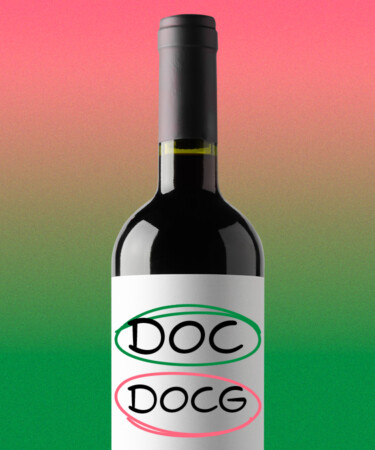While the quality of a wine is almost impossible to determine without popping the cork and tasting it for yourself, many wine-producing countries have introduced labeling systems in an effort to help consumers more easily understand how their wines are classified. One such labeling system is Italy’s denominazione di origine controllata (DOC), which was introduced in 1963 as a means of labeling and protecting Italian wines exported elsewhere.
Italy’s classification system consists of four categories, with the first two not serving as quality measures of the wines they are labeling, but rather the geographic location where the wine was produced. Any wine produced without a geographical indication will be labeled Vino da Tavola (VdT), while wines produced with a specific region indicated — but without any distinct quality indications — will be labeled Indicazione Geografica Tipica (IGT).
The latter two designations, Denominazione di Origine Controllata (DOC) and Denominazione di Origine Controllata e Garantita (DOCG), exist in a top-tier of their own called Denominazione d’Origine Protetta (DOP), or Protected Designation of Origin. DOP labelings serve as indication of not only the geographic region in which the wines were produced, but also of the methods used in the production and the quality standards each wine meets.
Denominazione di Origine Controllata, which translates to “regulated place-name,” is the second-highest quality standard an Italian wine can meet and can be attributed to almost every Italian wine style. In order for a wine to be labeled DOC, winemakers must adhere to a strict set of guidelines throughout the production process ranging anywhere from zoning laws to permitted grape varietals. There are currently over 300 distinct DOCs in Italy, each with its own unique regulations winemakers are required to follow, meaning the guidelines for, say, Salice Salentino DOC wines differ from those of Frascati DOC wines.
The highest quality standard an Italian wine can achieve is DOCG status, a classification that translates to “regulated and guaranteed place-name.” The DOCG designation was introduced in 1980 after a series of complaints that too many wines were receiving DOC status with variable quality. As such, in order for any wine to receive a DOCG designation, it must receive a guarantee of quality by the Italian government. In addition to following the same strict standards as DOC wines, DOCG-certified wines must undergo a taste test conducted by a government sponsored and approved ministerial committee. Only wines that pass this quality test can receive a guarantee, after which winemakers are legally permitted to label their wines DOCG. In all of Italy, there are just 74 DOCGs.
While DOCG wines have had to undergo further quality testing, it would be incorrect to assume that purely because of this reason, DOCG wines are superior to those that are labeled DOC. As stated by Riccardo Binda, director of Consorzio per la Tutela dei Vini DOC Bolgheri e DOC Bolgheri Sassicaia, “There are many DOCs that have more restrictive quality parameters than DOCGs.” He goes on to explain that in his case, due to the extremely strict quality parameters they are already required to meet in order to receive a DOC, the additional quality tests necessary for a DOCG are unnecessary. It is also important to note that due to the rigid regulations winemakers are required to follow in order for their wines to qualify for DOP distinction, many Italian winemakers decide not to pursue a designation in favor of exploring new techniques or unusual grape varieties.
So, while DOP-labeled wines exist to prove the quality of select Italian wines, many fantastic bottlings are in circulation that will never be evaluated. In general, DOC and DOCG classifications can be helpful in the aisle when choosing our next Italian bottle, but don’t mistake them for the end-all-be-all declaration of a wine’s quality.
